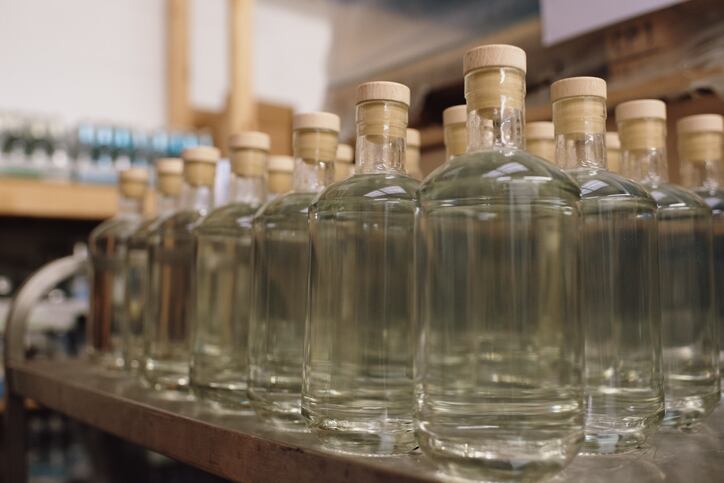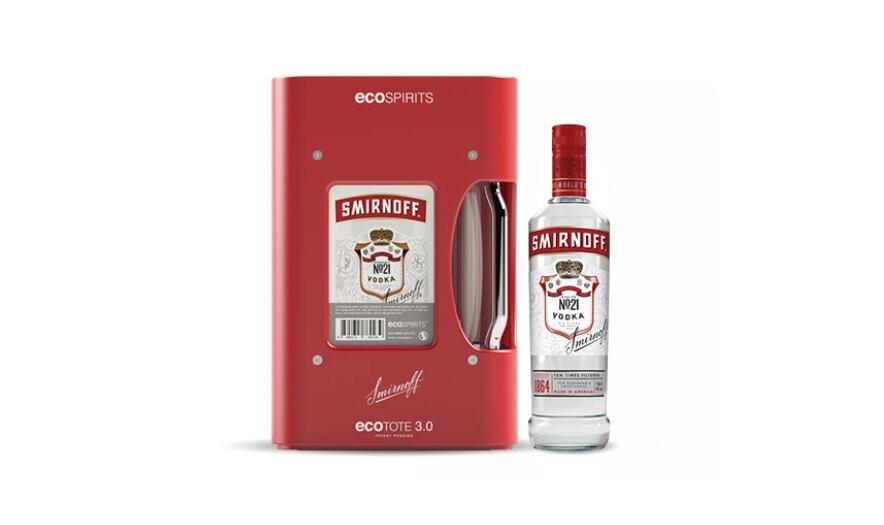As in whisky and other spirits, chemical compounds in gin impact the flavor and mouthfeel.
Researchers from two Scottish universities (Heriot-Watt University and The University of Edinburgh) have used nuclear magnetic resonance (NMR) spectroscopy – a technique more commonly used in the structural determination of molecules - to examine gin and identify its 'fingerprint' characteristics.
Compound identification
Most gin analysis is currently carried out using mass spectrometry. Although effective, it cannot provide a complete picture of gin composition in a single experiment in the same way as NMR.
So Dr Ruaraidh McIntosh, Dr Dave Ellis and PhD student Kacper Krakowiak from Heriot-Watt worked with Professor Dušan Uhrín from the University of Edinburgh on using NMR to identify and partially quantify constituents such as terpenes, carbohydrates, organic acids and phenolic compounds.
NMR can detect the signals given by the hydrogen atoms in each compound; which act as markets and enable identification. An overlay of all the fingerprints can be created in less than five minutes, providing a snapshot of the compounds present.
From London Dry Gin to fruit gin
In their study - published in the Journal of Brewing and Distilling this month - the team tested 16 different gins: ranging from those bought at the supermarket and others provided by Heriot-Watt’s International Centre for Brewing and Distilling (ICBD). Samples included London Dry, Compound Old Tom and fruit gins.
“We determined which compounds were present in each gin, and in which quantities," continued Dr Ellis.
“NMR can distinguish between different structural forms of individual molecules, and there are many of these cases in gin.
“For example, the flavor compounds pinene and limonene have the same atomic makeup but have different structures and, critically, flavors.
“We tested some fruit gins and gin liqueurs. The NMR identified the different varieties of sugar present in the gin, which are introduced through flavor additives, and their quantity. This is important information for consumers."
Furthermore, the gin industry - like many others in the beverage industry - could be impacted as climate change impacts the base ingredient: the juniper berry.
“UK distillers rely on imported juniper berries for their gin, and climate change could affect their quality and availability," said Ellis. "If their traditional supply dries up, will sourcing juniper berries from elsewhere change the flavor? That’s what we could determine with this technique.
“NMR has huge potential for the gin industry.”
The most "traditional" gin group is London Dry, characterized by the absence of any additives, aside from flavoring substances from botanicals used during redistillation, with the predominant flavor being juniper. In this category, the allowed amount of sugar is strictly regulated and cannot exceed 0.1 g/L of the product.
A second category is Compound Gin, in which botanicals and other flavoring compounds are added without redistillation. There are several classes of gins with added sugar, such as Old Tom Gins, utilizing traditional recipes, or fruit gins flavored with various compounds. These drinks are often distinguishable from the gin liqueurs by their higher alcohol content.
Defining gin is 'like the wild west'
As in England, gin production in Scotland has exploded over the last 20 years.
However, compared to Scotch whisky, it’s very loosely defined and regulated.
The EU states that gin must contain a minimum of 37% alcohol and the spirit is traditionally associated with flavorings provided by juniper berries.
However, the surge in popularity of the spirit has led to many flavored gins, sweetened gins and low or even no alcohol gins far away from the EU definition – creating a point of contention with the gin community.
Perhaps most importantly, there is limited available information on the chemical composition of gin: meaning that creating a way of unambiguous identification and distinction would be difficult in any case.
“The whisky market is very well-regulated, but there’s no equivalent for gin,” said Dr Ellis. “The EU imposes some requirements, but essentially, you can make anything, call it a gin and nobody will give you any trouble. It’s a bit like the wild west.
“We just need to try and find a way of reassuring consumers that the ‘gin’ that they are drinking really is gin."
That’s why a database for gin could be so important.
The Heriot-Watt International Centre for Brewing and Distilling has already created a database of Scottish botanicals and this could be used as a basis of standardization in the future, although researchers emphasize they are not trying to stifle innovation in the category. The database, rather, includes some 70 botanicals that can be grown in Scotland, which are commercially available and from a sustainable source.
That library is being used to ensure Scottish gin meets import standards of countries such as the US.
The researchers are also exploring whether their technique could apply to other alcoholic beverages.
'Assessment of the composition of gins by nuclear magnetic resonance spectroscopy' - Journal of Brewing and Distilling, Published December 31, 2023. https://doi.org/10.5897/JBD2023.0059


